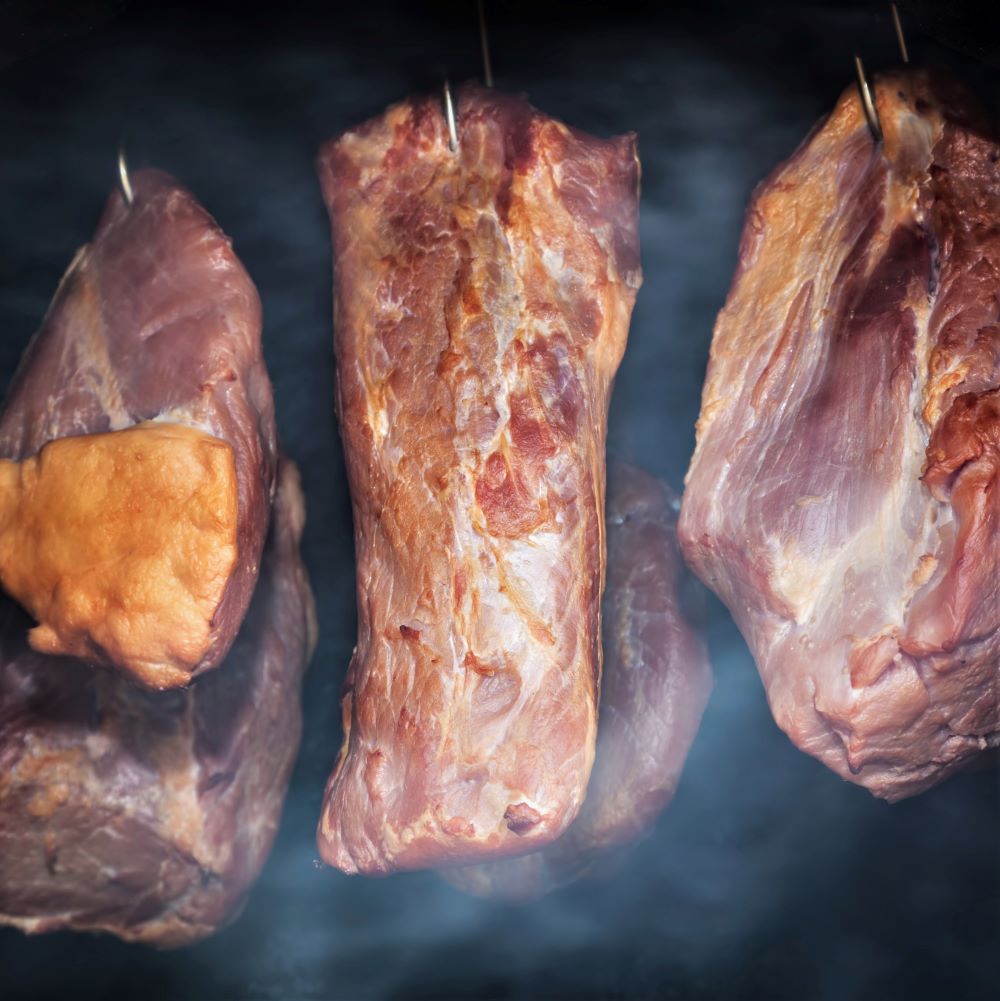

There’s only one thing worse than losing good meat to spoilage: That’s losing good meat to spoilage that you hunted, processed, and prepared yourself. Just imagine going into the freezer for a package of bratwurst, only to find it dried-out, freezer-burned, and covered in ice crystals. Suddenly, your cookout is several pounds of sausage short of making dinner.
That kind of loss is enough to frustrate even the most patient hunter. That’s why at LEM, we always say the hunt’s not over until you’ve taken the smart steps to ensure the meat you worked so hard to make ready is still good to eat when you’re good and ready.
We’ve picked our five favorite methods of food preservation, including dehydrating, smoking, canning, vacuum sealing, and curing. And the good news here? We’ve got the know-how and equipment to extend the freshness and freezer life of every meat you brought home from the hunt.
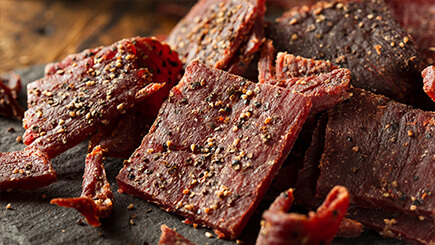 Dehydrating is one of the oldest methods of food preservation. The technique removes the moisture from food to extend its shelf-life and increase its portability. Prehistoric cultures dehydrated food via sun-drying, but thanks to modern food dehydrators, you can do better in less time, all from the comfort of your home.
Dehydrating is one of the oldest methods of food preservation. The technique removes the moisture from food to extend its shelf-life and increase its portability. Prehistoric cultures dehydrated food via sun-drying, but thanks to modern food dehydrators, you can do better in less time, all from the comfort of your home.
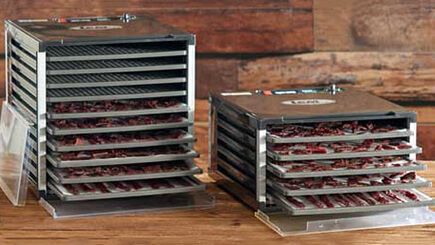 While most often used to make jerky, food dehydrators can manage more than meat; they can also preserve fruit and vegetables. LEM dehydrators can dry batches of mouthwatering jerky, apple chips, dried bananas and even apricots for trail mix. And while you can dehydrate food in your oven or on a sunny rock in your backyard, you’ll get better results with our Big Bite Digital Stainless Steel or Digital 5-tray dehydrator. Who wants to lay their food on rocks, anyway?
While most often used to make jerky, food dehydrators can manage more than meat; they can also preserve fruit and vegetables. LEM dehydrators can dry batches of mouthwatering jerky, apple chips, dried bananas and even apricots for trail mix. And while you can dehydrate food in your oven or on a sunny rock in your backyard, you’ll get better results with our Big Bite Digital Stainless Steel or Digital 5-tray dehydrator. Who wants to lay their food on rocks, anyway?
To dry food, a dehydrator needs to maintain a constant temperature and air flow. We recommend drying at a lower temperature for a longer period of time because high temperature causes the exterior of your food to form a shell. This slows the drying of the interior of the food. When shopping for a dehydrator, keep these 4 important factors in mind: Heat & Air Flow, Access, Versatility, and Materials & Quality. LEM dehydrators offer top marks on all four factors, but we’re admittedly partial.
You can further extend the already long shelf-life of dehydrated meat by vacuum sealing and freezing it after dehydration. This is a great way to ensure you have a stash of jerky all year long. For more information on jerky recipes and jerky making techniques, see our How to Make Homemade Jerky blog post.
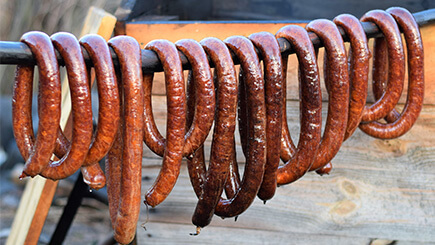 Smoking is another preservation technique that predates modern cooking. By using warm, smoke-filled air to dry meat, ancient hunters produced a better-tasting, longer-lasting product than those who simply let meat air dry alone. When combined with a pre-cure of salt or a salty brine, smoking produces an incredibly efficient preservation process.
Smoking is another preservation technique that predates modern cooking. By using warm, smoke-filled air to dry meat, ancient hunters produced a better-tasting, longer-lasting product than those who simply let meat air dry alone. When combined with a pre-cure of salt or a salty brine, smoking produces an incredibly efficient preservation process.
This technique took a giant leap forward in 1939, when the Torry Kiln was invented at the Torry Research Station in Scotland. Invented to address the loss of tons and tons of fish to decay, the kiln provided a way to smoke large quantities of meat at one time in a controlled environment. It provided the prototype for all modern smokers, including the Mighty Bite Electric Smoker.
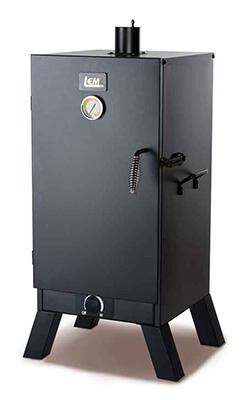 You can smoke food at several temperatures, accomplishing several different things. Cold smoking (which takes place between 68℉ and 86℉) imparts a smoked flavor to the food but does not cook the food, leaving it very moist. Cheese, nuts, and even some meats are often cold smoked.
You can smoke food at several temperatures, accomplishing several different things. Cold smoking (which takes place between 68℉ and 86℉) imparts a smoked flavor to the food but does not cook the food, leaving it very moist. Cheese, nuts, and even some meats are often cold smoked.
Hot smoking, (within the range of 126℉ and 176℉), yields food that is fully cooked, still moist, and full of smoky flavor. Sausages or jerky are particularly delicious when smoked, but fowl, roasts, and ribs are also great candidates. Read more about smoking techniques, recipes, or even how to build your own smokehouse in our LEM Smoking and Curing Books Section.
 Canning is a modern technique for food preservation that involves processing and heating food in an airtight container. Modern, that is, when compared to smoking and dehydrating. The method was invented in 1809 by Nicolas Appert, a French confectioner and brewer. The good news for the hunting family is that canning isn’t just for jams, fruits, and vegetables.
Canning is a modern technique for food preservation that involves processing and heating food in an airtight container. Modern, that is, when compared to smoking and dehydrating. The method was invented in 1809 by Nicolas Appert, a French confectioner and brewer. The good news for the hunting family is that canning isn’t just for jams, fruits, and vegetables.
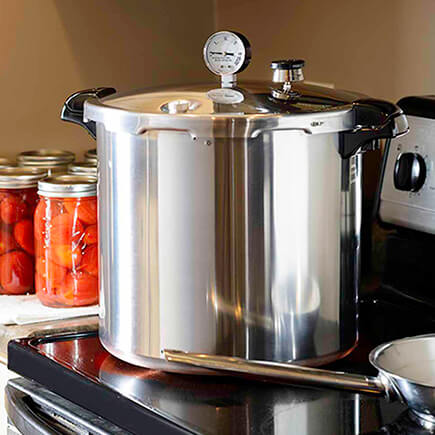 With the proper equipment, like an LEM Pressure Canner, you can preserve venison, chicken, fish, elk, and all kinds of meat via canning. You’ll be left with shelf-stable, delicious meat that’s ready to prepare for dinner, or feed your family for weeks in the event of a loss-of-power emergency. Of note here, you MUST have a pressure canner to safely can meats, fish, and fowl. However, if you’d like to can fruits, vegetables, and jams, a steam canner is a great option.
With the proper equipment, like an LEM Pressure Canner, you can preserve venison, chicken, fish, elk, and all kinds of meat via canning. You’ll be left with shelf-stable, delicious meat that’s ready to prepare for dinner, or feed your family for weeks in the event of a loss-of-power emergency. Of note here, you MUST have a pressure canner to safely can meats, fish, and fowl. However, if you’d like to can fruits, vegetables, and jams, a steam canner is a great option.
If you do decide you’re ready to start canning, having the right tools makes all the difference. The LEM starter canning kit gives you much of what you need, and the Ultimate Canning Kit gives you everything you could want.
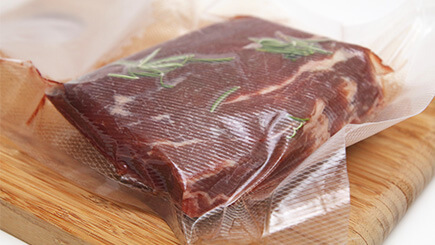 Next came vacuum sealing, originated by food packaging companies in the 40’s. By sealing the product in plastic, vacuuming all the air out of the bag, and then sealing the package, this technique prevented spoilage by inhibiting the growth of bacteria and mold. It also prevents freezer burn by ensuring the food inside the package doesn’t contact the air outside the package. This means the moisture can’t evaporate, and your meat won’t turn dry and bland in your freezer.
Next came vacuum sealing, originated by food packaging companies in the 40’s. By sealing the product in plastic, vacuuming all the air out of the bag, and then sealing the package, this technique prevented spoilage by inhibiting the growth of bacteria and mold. It also prevents freezer burn by ensuring the food inside the package doesn’t contact the air outside the package. This means the moisture can’t evaporate, and your meat won’t turn dry and bland in your freezer.
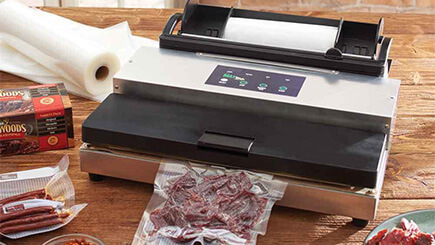 This is another technique you can practice at home, and LEM offers all the tools you need to vacuum seal everything from just cut meat to processed and smoked sausage. For liquids and liquid rich foods, consider the MaxVac Pro Chamber Vacuum Sealer. Or, for up to 5 hours of continuous use, the MaxVac 500 Vacuum Sealer has you covered. And remember, everything from jerky to sausage to whole roasts can benefit from vacuum sealing before freezing or refrigeration.
This is another technique you can practice at home, and LEM offers all the tools you need to vacuum seal everything from just cut meat to processed and smoked sausage. For liquids and liquid rich foods, consider the MaxVac Pro Chamber Vacuum Sealer. Or, for up to 5 hours of continuous use, the MaxVac 500 Vacuum Sealer has you covered. And remember, everything from jerky to sausage to whole roasts can benefit from vacuum sealing before freezing or refrigeration.
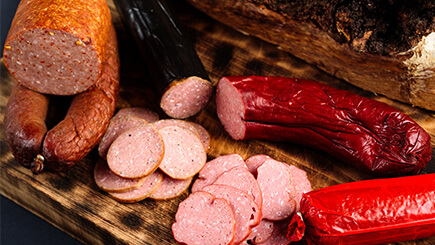 Curing is traditionally linked with bacon, sausages, and hams, but can be used for many other types of food. By definition, curing involves the addition of different combinations of salt, nitrites, or sugars to draw out the moisture from the food. And while cured meat is less hospitable to many kinds of bacteria, it’s also more delicious. Often used in conjunction with smoking, dehydration, or cooking the food, this is one of the older methods of food preservation.
Curing is traditionally linked with bacon, sausages, and hams, but can be used for many other types of food. By definition, curing involves the addition of different combinations of salt, nitrites, or sugars to draw out the moisture from the food. And while cured meat is less hospitable to many kinds of bacteria, it’s also more delicious. Often used in conjunction with smoking, dehydration, or cooking the food, this is one of the older methods of food preservation.
You’ll find many of the Backwoods Jerky and Sausage Seasonings contain Cure ingredients, like the Backwoods Original Jerky Seasoning or the Backwoods Bacon Cure. These seasonings have been blended and mixed to ensure maximum flavor and compatibility with wild game meat while ensuring your food is preserved and prepared as it should be.
Through practice and trial and error, you may find that your favorite food preservation techniques are one, two, or even a combination of several of the techniques included above. Jump in and go for it, we applaud the effort. You might smoke a cured sausage and then vacuum seal it before putting it into the freezer. Dehydrated jerky will last longer on your shelf when it’s sealed inside that same plastic keeping your back straps from getting freezer burned.
Just know that whatever your food preservation needs, LEM has you covered. The only mistake here is not finishing the hunt, so whatever recipe you choose, it’s time to get cooking.